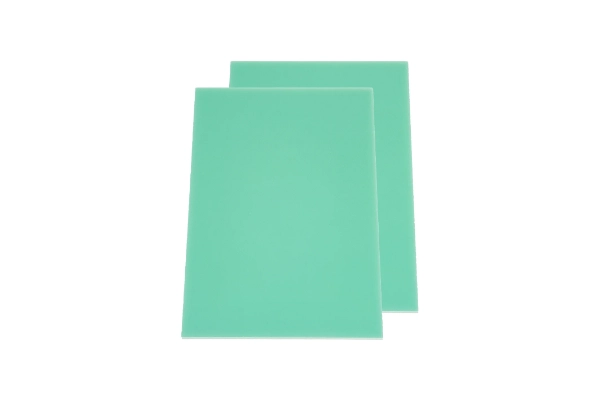In the realm of electrical and mechanical engineering, the choice of materials is pivotal to the performance, safety, and longevity of the final product. Among the myriad of options, FR4 and FR5 epoxy glass sheets stand out as two materials that have earned their stripes through consistent performance and reliability. In this blog post, Blue Sun will share the comparative analysis of these two materials, shedding light on their properties, applications, and the factors that might influence their selection in various industries.
Introduction to FR4 and FR5 Epoxy Glass Sheets
FR4 and FR5 epoxy glass sheets are both woven fiberglass substrates impregnated with a flame-retardant epoxy resin. They are renowned for their excellent electrical insulation, mechanical strength, and resistance to environmental factors such as moisture and temperature fluctuations. These properties make them ideal for a wide range of applications, from simple electrical insulation to complex mechanical components.

Mechanical and Electrical Properties
Both FR4 and FR5 boast impressive mechanical strength, with flexural strengths perpendicular to the laminations exceeding 340 MPa. This ensures that they can withstand significant physical stress without compromising their structural integrity. In terms of electrical properties, both materials exhibit high electric strength perpendicular to the laminations, with values reaching up to \(5 \times 10^2 \times 10^2\) MΩ, providing reliable insulation even in demanding conditions.
The Charpy impact strength of both materials is also noteworthy, with values reaching up to 35 Kv, indicating their ability to absorb energy and resist breaking under impact. This is crucial for applications where the material may be subjected to sudden shocks or impacts.
Thermal Performance and Stability
One of the key differences between FR4 and FR5 lies in their thermal performance. FR4 is designed to operate effectively up to 130°C, making it suitable for a wide range of applications. However, FR5 takes this a step further, maintaining its insulating and mechanical properties at temperatures up to 150°C. This enhanced thermal stability makes FR5 particularly attractive for high-temperature applications, such as in the automotive industry, where it can withstand the rigors of engine compartments and other high-heat environments.

Flammability and Safety
Both materials are designed with safety in mind, featuring a UL94-V0 combustibility rating. This means they can self-extinguish within a specified time frame, reducing the risk of fire and ensuring compliance with stringent safety regulations.
Environmental Resistance
In terms of environmental resistance, both FR4 and FR5 perform admirably. They exhibit good insulation resistance even after immersion in water, maintaining their electrical properties and structural integrity. This makes them suitable for use in humid and wet conditions, where many other materials might degrade.
Applications and Industry Preferences
The choice between FR4 and FR5 often comes down to the specific requirements of the application. FR4, with its excellent all-around performance and cost-effectiveness, is widely used in a variety of industries, including electronics, telecommunications, and general engineering.
FR5, on the other hand, is often the material of choice for industries that demand higher thermal stability. Its ability to maintain performance at elevated temperatures makes it ideal for automotive, aerospace, and other high-heat applications.
Conclusion
In conclusion, both FR4 and FR5 epoxy glass sheets are high-performance materials that offer a combination of mechanical strength, electrical insulation, and environmental resistance. While FR4 is a versatile and cost-effective solution for a broad range of applications, FR5 emerges as the material of choice for those requiring superior thermal performance. As industries continue to push the boundaries of what is possible, the choice between FR4 and FR5 will be dictated by the specific demands of the application, ensuring that both materials continue to play a vital role in the advancement of technology and engineering.
https://www.bluesun-elec.com.cn/FR4-FR5-Epoxy-Glass-Sheets.html
www.bluesun-elec.com.cn
Blue Sun

